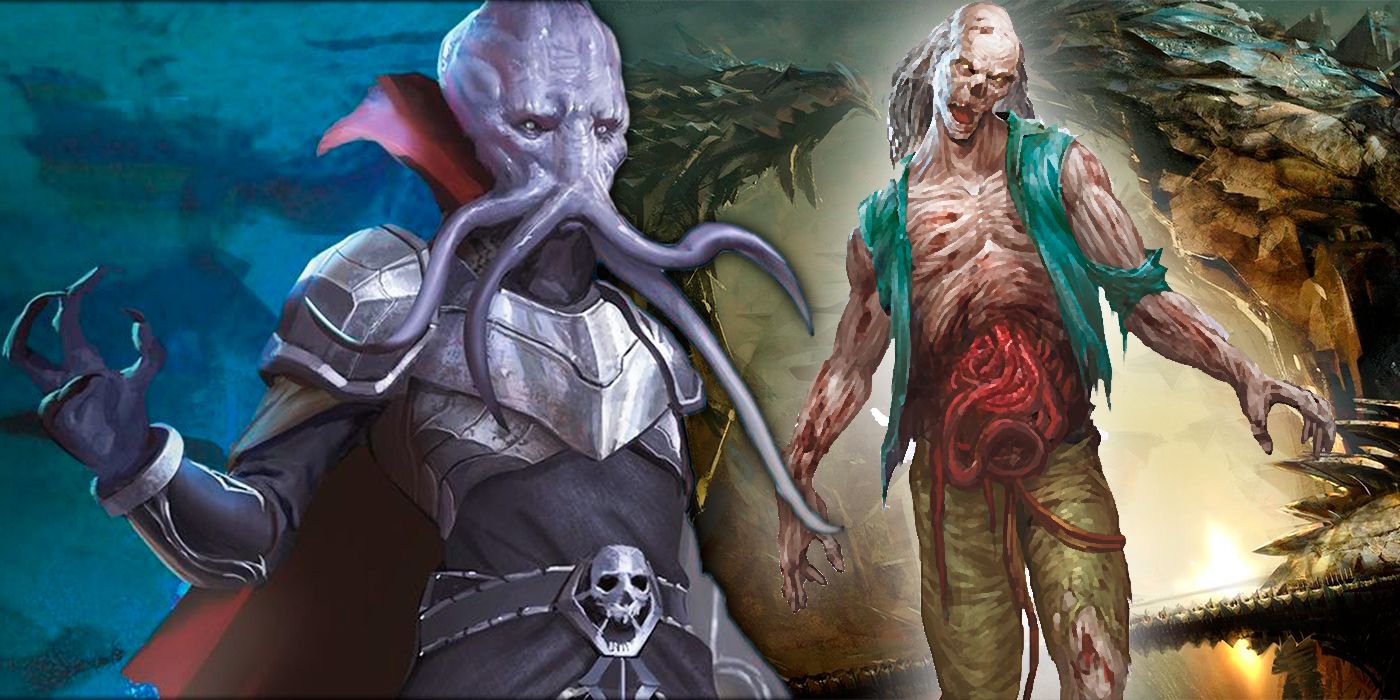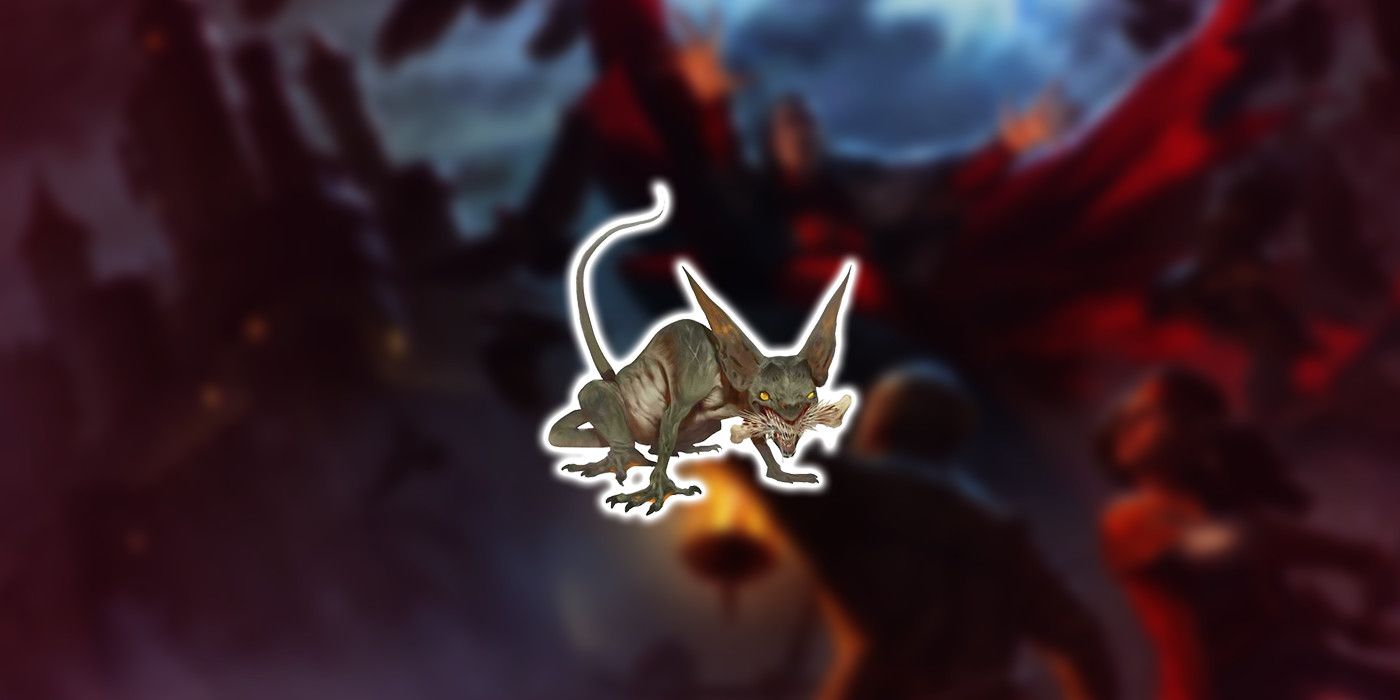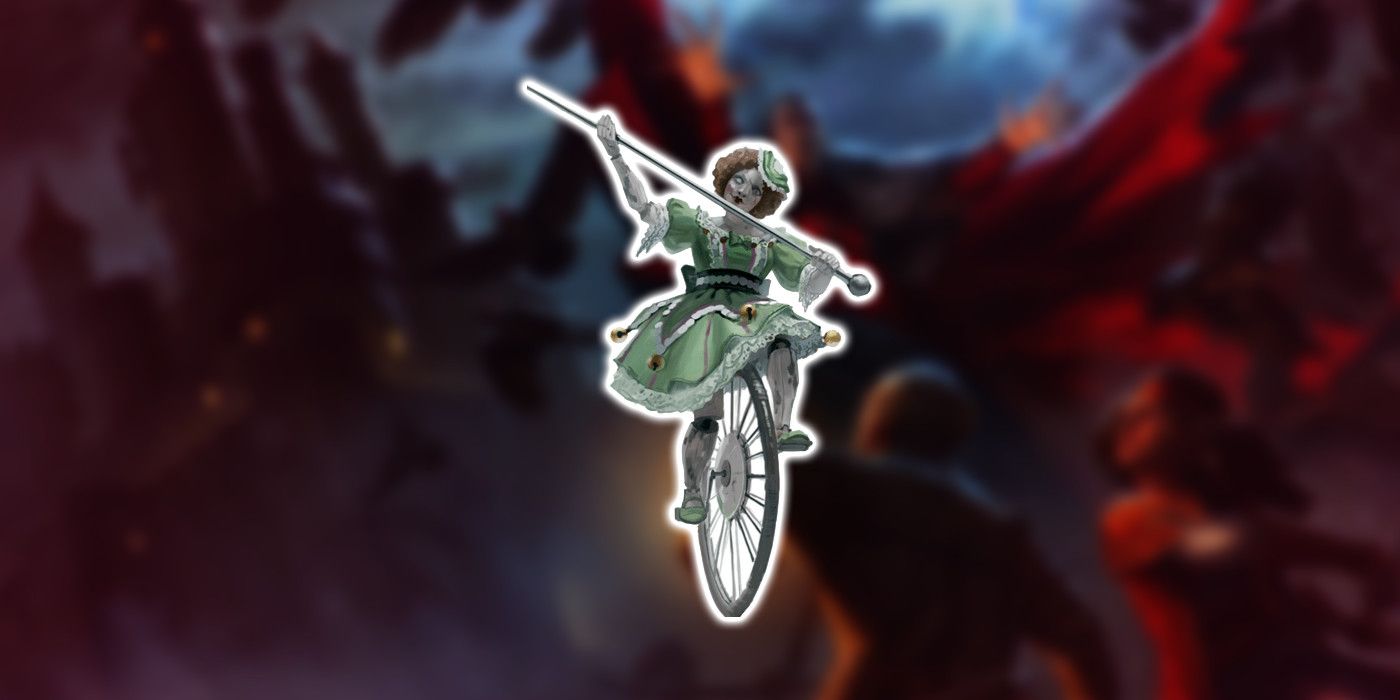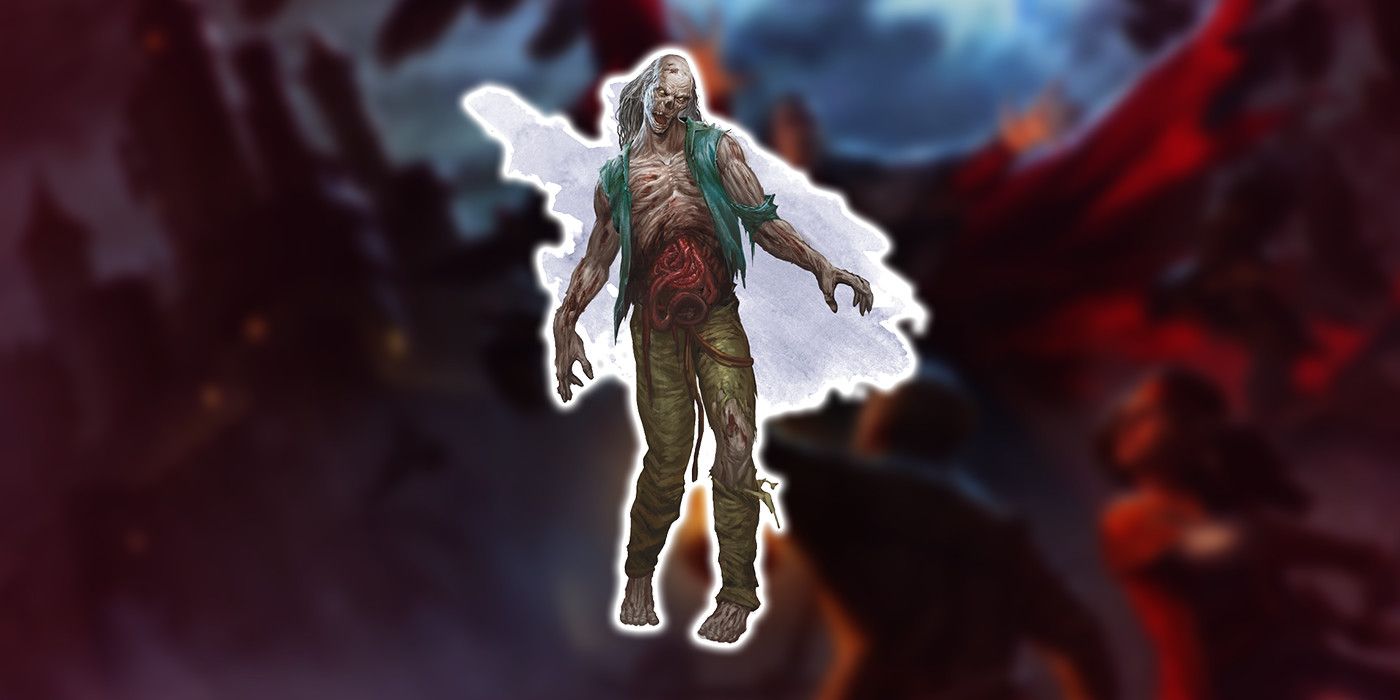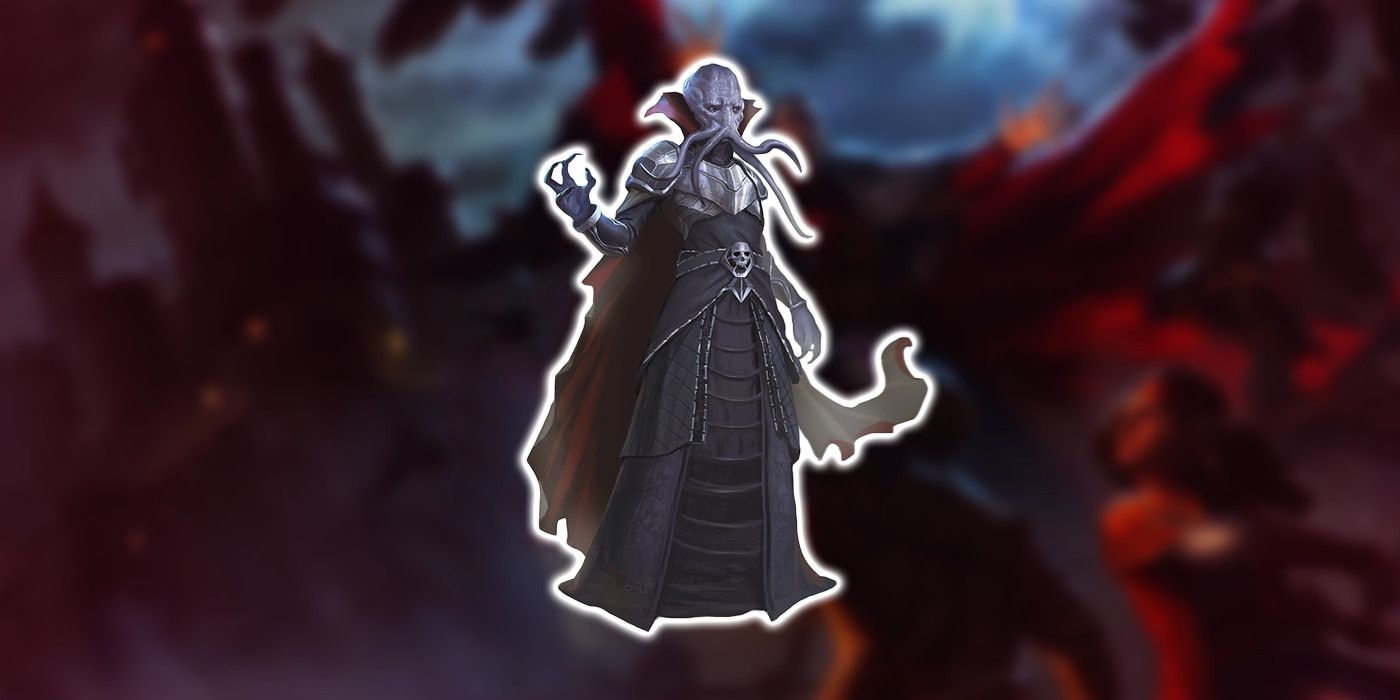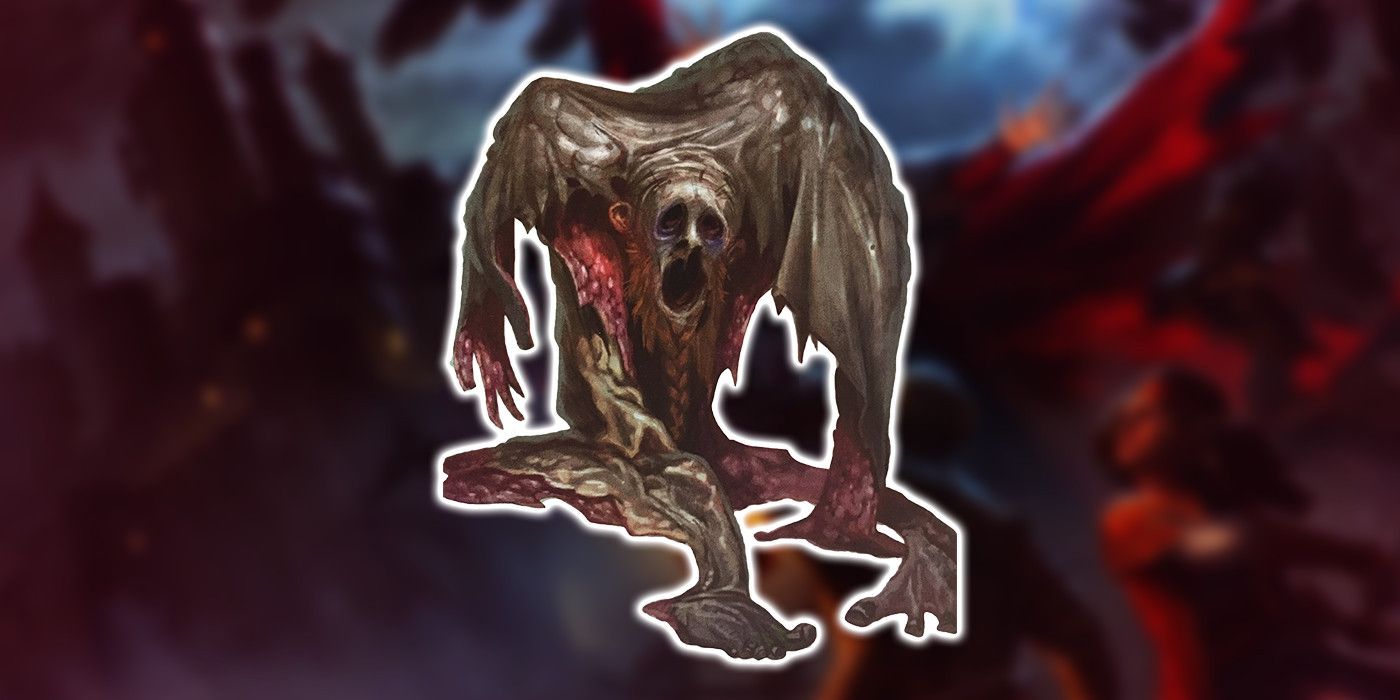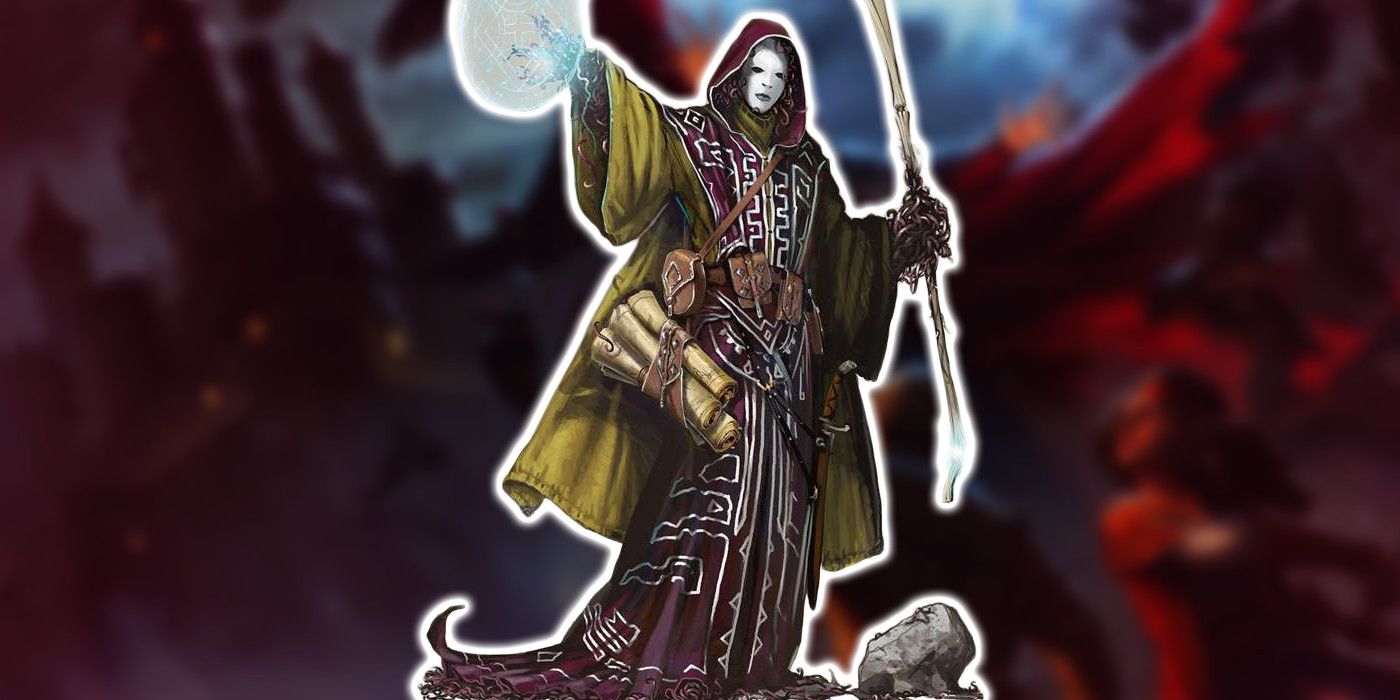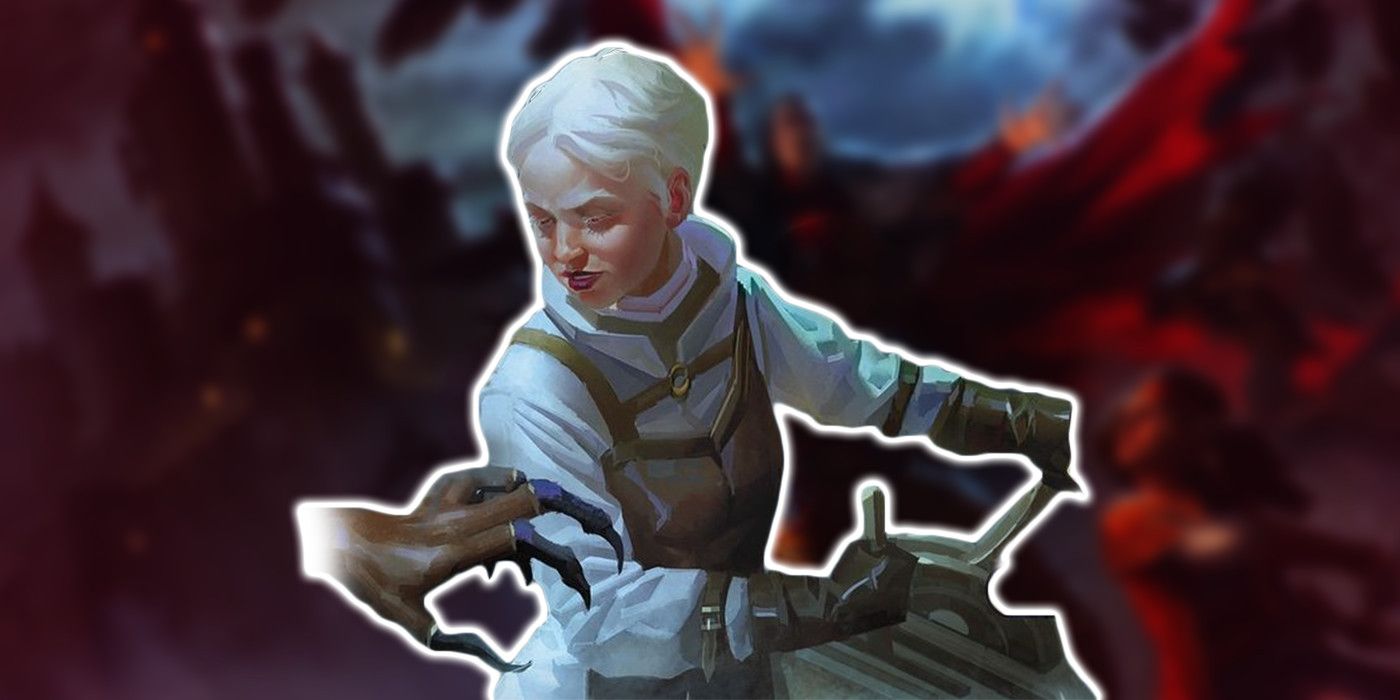Van Richten's Guide to Ravenloft is expanding the many kinds of horror already found within Dungeons & Dragons Fifth Edition. The book dives deep into the lands of Ravenloft, exploring its many realms of tortured souls and giving players new subclasses, game rules and magic items to use in horror-themed campaigns and one-shots.
One of the biggest draws of the realms of Ravenloft is the wide range of horror-inspired monsters that fill its bestiary. With a total of 32 new creatures and even a few monstrous races, here are just seven of the best gothic nightmares that Van Richten's Guide has in store for players and Dungeon Masters alike.
Gremishka
Created by unstable magic, Gremishkas are small, goblin-like creatures who literally feed on magic. Spellbooks, scrolls, spell components and even familiars aren't safe from these magical mistakes. They aren't the toughest new creature in Van Richten's Guide, but they can easily be one of the deadliest -- especially when they attack in swarms. The book includes stat blocks for both solo Gremishkas and for a swarm of them.
Spellcasters have quite a bit to fear when they're under attack by these monsters. Not only are Gremishka swarms immune to third-level spells and lower, but they can also redirect any spell that misses them to a target of their choosing. An individual Gremishka is still a major threat to casters due to their Magic Allergy, which causes them to let off a random effect whenever a spell is cast within 30 ft of them. That's an easy chain reaction waiting to happen if multiple Gremishkas are able to ambush a party of casters.
Carrionette
Carrionettes are classic Dungeons & Dragons monsters that are making their official return in Van Richten's Guide. As their name implies, Carrionettes take the form of a children's toy, though they can also appear as small statues or other pieces of art. If they remain completely motionless, adventurers won't be able to pick them out as monsters without a successful Wisdom saving throw.
However, the true terror of the Carrionette comes from its Soul Swap ability, which allows a Carrionette to swap bodies with another creature. The creature has to be under the effect of the Carrionette's Silver Needle curse and can prevent the body-swap with a successful Charisma save. This effect lasts an hour and can also be undone using the Protection from Good and Evil spell, though it should be noted that, if the Carrionette's original body is destroyed, the target they're possessing also dies.
Zombies
Zombies are pretty standard horror monsters, and they are no stranger to D&D. Normal zombies can be fairly easy to take care of, but Van Richten's Guide gives DMs some new ways to run a zombie encounter. The Zombie Plague Spreader, Zombie Clot and Swarm of Zombie Limbs are new undead creatures that populate one of Ravenloft's many realms.
Falkovnia has been given a massive reimagining for this book, as it's now a land stuck in a permanent loop of undead swarms and endless torture by their Darklord. Given Falkovnia is putting a renewed focus on the undead, it makes sense that some truly new terrifying zombie types would be included in the book's bestiary. One undead type of note is the Zombie Clot, a massive cluster of undead forming a bigger creature that looks like a boss straight out of Dark Souls.
Vampiric Mind Flayers
Vampiric Mind Flayers are a classic Dungeon & Dragons monster that combines two terrifying concepts. First appearing in the Thoughts of Darkness adventure book for Advanced Dungeons & Dragons, vampiric mind flayers are either the result of a Mind Flayer tadpole infecting a vampiric host or a host that becomes a vampire before the tadpole fully converts them. Vampiric mind flayers possess all the same telepathic powers of a normal mind flayer while also inheriting the thirst for blood and abilities of a vampire.
Originally known as vampiric illithids, vampiric mind flayers were a force to be reckoned with in Advanced Dungeons & Dragons. Their superior strength stat meant that they'd be able to overpower most adventurers. However, they still possessed the mental attacks of a standard mind flayer and would often open combat with a powerful mind blast. Vampiric Mind Flayers do still suffer from the same weaknesses as normal undead.
Boneless
Boneless are another classic D&D monster that's returning in Van Richten's Guide. This creature's design dives deep into body horror, exemplifying how the latest sourcebook touches upon various kinds of horror to reimagine Ravenloft's many realms. Boneless certainly live up to their name by being fleshy beings of skin and meat, with no bones to speak of.
Boneless appeared in previous editions of D&D as skinless and boneless humanoids, though they've received a total redesign for 5e. Instead of simply being humanoid in shape, Boneless now appears to be living flaps of skin that may have once belonged to a humanoid of some kind. The fact that they move with inconsistent and jerking motions just adds to how unnerving they are.
Star Spawn Emissaries
There are two different stat blocks for Star Spawn Emissaries introduced in Van Richten's Guide. These monsters (and star spawn as a whole) are the perfect monsters for fans of Lovecraftian horror-themed campaigns. Within Forgetten Realms lore, Star Spawns were originally created by the Elder Evils to serve their will on the Material Plan. These Star Spawns would often form alliances with other twisted beings, which may explain their presence in Ravenloft.
Star Spawns were introduced to 5e with Mordenkainen's Tome of Foes, though Ravenloft introduces two new types of Star Spawns: the Lesser and Greater Star Spawn Emissary. These two types are actually two different forms, with the Star Spawn Emissary able to appear as anything when they're in their lesser form. The Greater Star Spawn is a beast that is described as being incomprehensible to most mortal eyes.
Reborn
Perhaps the most interesting "monster" introduced in Van Richten's Guide is the new playable race. Fans of revenants and Warforged should instantly recognize the appeal of these humanoid constructs. Reborn are dead bodies that have been kept alive through the use of powerful magic or science -- though this extended life isn't without consequence. Their memories of their previous lives are often faded and uncertain, though they can come back in a rush of awareness.
Reborn aren't incapable of dying like revenants, but they are resistant to death. Much like other constructs, Reborn don't need to eat, drink or sleep, though they still need to rest for a period of time to complete long rests. Reborn are a unique mix of construct and mortal that bends the line between living and dead. While they may not be monsters in the traditional sense, they are one of the most interesting creatures added in Van Richten's Guide to Ravenloft, and their mere presence has the potential to inspire some truly fascinating stories.

